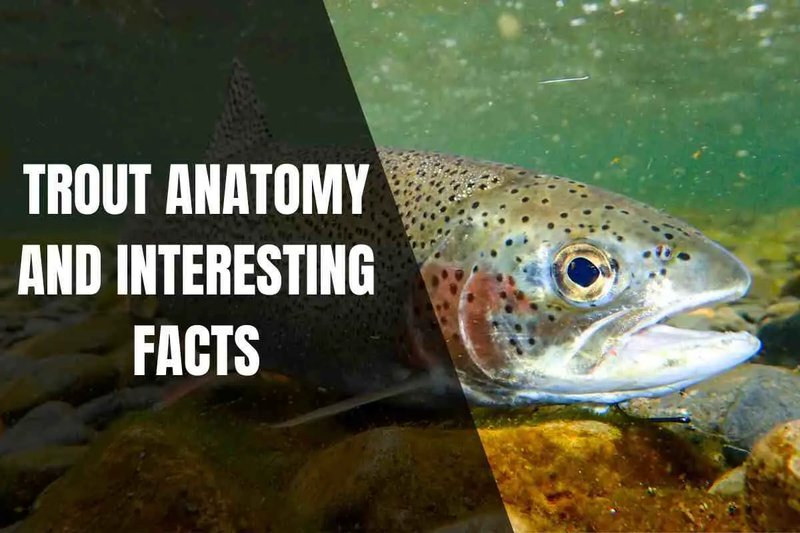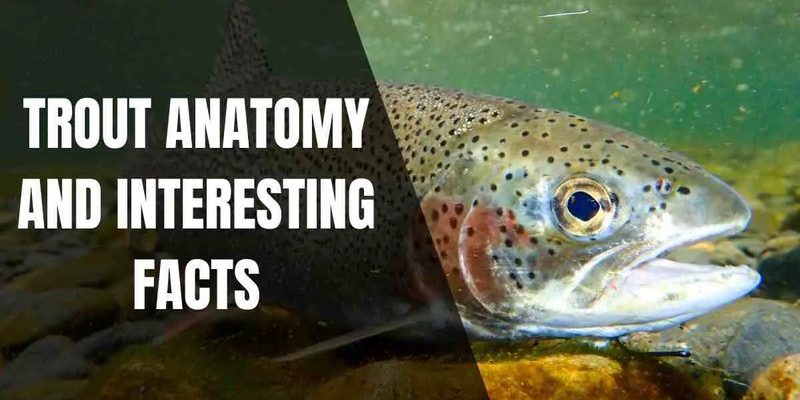
Imagine sitting by a serene lake, casting your line into the water, and waiting to see what bites. You might think you know them, but these fish have layers that would make an onion jealous! From their colorful appearances to their incredible adaptability, trout have a fascinating life that’s not just about being a meal on a plate or a trophy on a wall. So grab a cup of coffee, sit back, and let’s dive into the wonderful world of trout!
1. Trout Come in Many Varieties
When it comes to trout, variety truly is the spice of life. There are several species, with some of the most popular being Rainbow Trout, Brown Trout, Brook Trout, and Lake Trout. Each type not only looks different but also has unique habits and habitats.
– Rainbow Trout are famous for their vibrant colors. They sport a flashy spectrum of hues that can brighten up any fishing day.
– Brown Trout are known for their mysterious spots and golden-brown bodies, often found in colder, clear waters.
– Brook Trout, on the other hand, are often smaller and are often confused with their cousins. Their colors are stunning, boasting a mix of blue, green, and deep red hues.
– Lake Trout tend to be larger, often living in deeper, cooler waters.
Understanding these differences isn’t just for show; knowing which trout you’re after can significantly affect your fishing strategy.
2. They Can Adapt to Different Environments
Trout are surprisingly adaptable fish. They can thrive in a variety of freshwater environments, from swift mountain streams to still lakes. This adaptability makes them fascinating for researchers and anglers alike.
Here’s the thing: Trout have the ability to migrate between freshwater and saltwater, though most species prefer to stick to freshwater habitats. This adaptability isn’t just a survival tactic; it’s ingrained in their genetic makeup. For example, some rainbow trout migrate to the ocean, turning into steelhead, only to return to freshwater streams to spawn. You might picture trout as creatures of simple habits, but their ability to navigate different ecosystems shows just how resilient they can be.
3. Trout Have Unique Feeding Habits
When you think about what trout eat, you might imagine worms and insects, and you wouldn’t be wrong! Trout are opportunistic feeders, meaning they’ll munch on whatever they can find. Their diet mainly consists of:
- Insects (think flies and larvae)
- Small fish
- Crustaceans
- Plants
You might be wondering how they catch their food. Trout often feed by lying in wait, using their keen eyesight to spot movement above the water’s surface. When they see something tasty, they strike with surprising speed. This is why casting a well-placed fly can be such an effective fishing technique—mimicking the natural movements of insects can lead to a big catch!
4. They Are Sensitive to Their Environment
One of the most intriguing facts about trout is how sensitive they are to changes in their surroundings. They’re like the canaries in the coal mine for freshwater ecosystems. Their presence (or absence) often indicates the health of the water they inhabit.
Trout thrive in clean, cool, oxygen-rich waters, which means if you see them struggling, it might be a sign of pollution or rising water temperatures. This sensitivity makes them vital to conservation efforts. Organizations dedicated to preserving trout habitats are crucial for maintaining the biodiversity of aquatic ecosystems.
5. Trout Can Live for a Long Time
You might think of trout as a quick catch—a tasty dinner that doesn’t live long once hooked. But some species can live for a surprisingly long time! For example, lake trout can live up to 50 years in the right conditions. That’s longer than some dogs!
This longevity contributes to their growth and size. Larger trout are often older, and some anglers specifically target them for the challenge. The big catch isn’t just a bigger meal; it represents years of survival in a competitive environment. Plus, older trout often have a story to tell, having outsmarted fishermen for decades.
6. They Have Some Incredible Coloration
The stunning colors of trout serve more than just a decorative purpose. Each species has distinct markings that help with camouflage, which is vital for avoiding predators. For example, the vivid pink stripe of the rainbow trout isn’t just eye candy; it helps them blend into the colorful pebbles and plants of their habitat.
But did you know that color changes can also happen based on the trout’s environment? In murky waters, trout may develop darker hues to help them stay hidden. This evolutionary trait allows them to adapt not just for survival but also for hunting, as their coloration plays a role in both their camouflage and hunting strategy.
7. Trout Are Not Just for Fishing
While many people admire trout for their place in the fishing world, they also hold cultural significance across various communities. In some regions, trout symbolize prosperity and good fortune. Many cultures celebrate fishing traditions, where trout become the centerpiece of gatherings and culinary delights.
Trout dishes, like *trout almondine* or *smoked trout spread*, are not just about eating fish; they tell stories about local cuisines and traditions. Honestly, sharing a meal featuring trout can be an experience that connects families and friends, reminding us of the simple joys of life.
8. They Play a Key Role in Ecosystems
Besides being tasty, trout are essential players in their ecosystems. As predators, they help maintain the balance of fish populations and control insect numbers. By keeping smaller fish species in check, trout contribute to a healthy aquatic environment.
Moreover, their spawning activities provide nutrients to surrounding ecosystems. When trout lay their eggs in gravel beds, it not only supports future generations but also enriches the habitat for other species. The importance of trout goes beyond just their presence; they’re a crucial thread in the ecological fabric of freshwater systems.
9. Trout Fishing Is a Popular Sport
Trout fishing is more than just a hobby; it’s a beloved sport that attracts thousands of anglers worldwide. People often travel to specific lakes or rivers known for their trout populations, with some planning entire vacations around it. The thrill of casting a line and feeling that tug is exhilarating for many.
Different methods exist for catching trout, such as fly fishing, trolling, or simply using bait. Each technique offers its own set of challenges and rewards. On top of that, trout fishing fosters a sense of community, bringing anglers together to share tips, stories, and, of course, the joy of landing a big one.
10. Conservation Efforts Are Vital
As beautiful and vital as they are, trout populations face threats from pollution, habitat destruction, and climate change. Many organizations are working tirelessly to promote conservation efforts aimed at protecting these fish and their habitats.
You might be surprised to learn that simply being mindful of water use and pollution can make a difference. Supporting local conservation groups or participating in clean-up efforts helps ensure that future generations can enjoy trout fishing and the beauty of these fish. It’s a collaborative effort to keep our ecosystems healthy, reminding us that every little action counts in preserving nature’s wonders.
In closing, trout are more than just a catch; they’re a colorful part of our natural world that deserves respect and admiration. Whether you enjoy fishing, cooking, or simply appreciating these beautiful fish, there’s no denying the fascinating life they lead. So the next time you think about trout, remember these facts and the roles they play both in our lives and in the ecosystem—because they truly are remarkable creatures.

